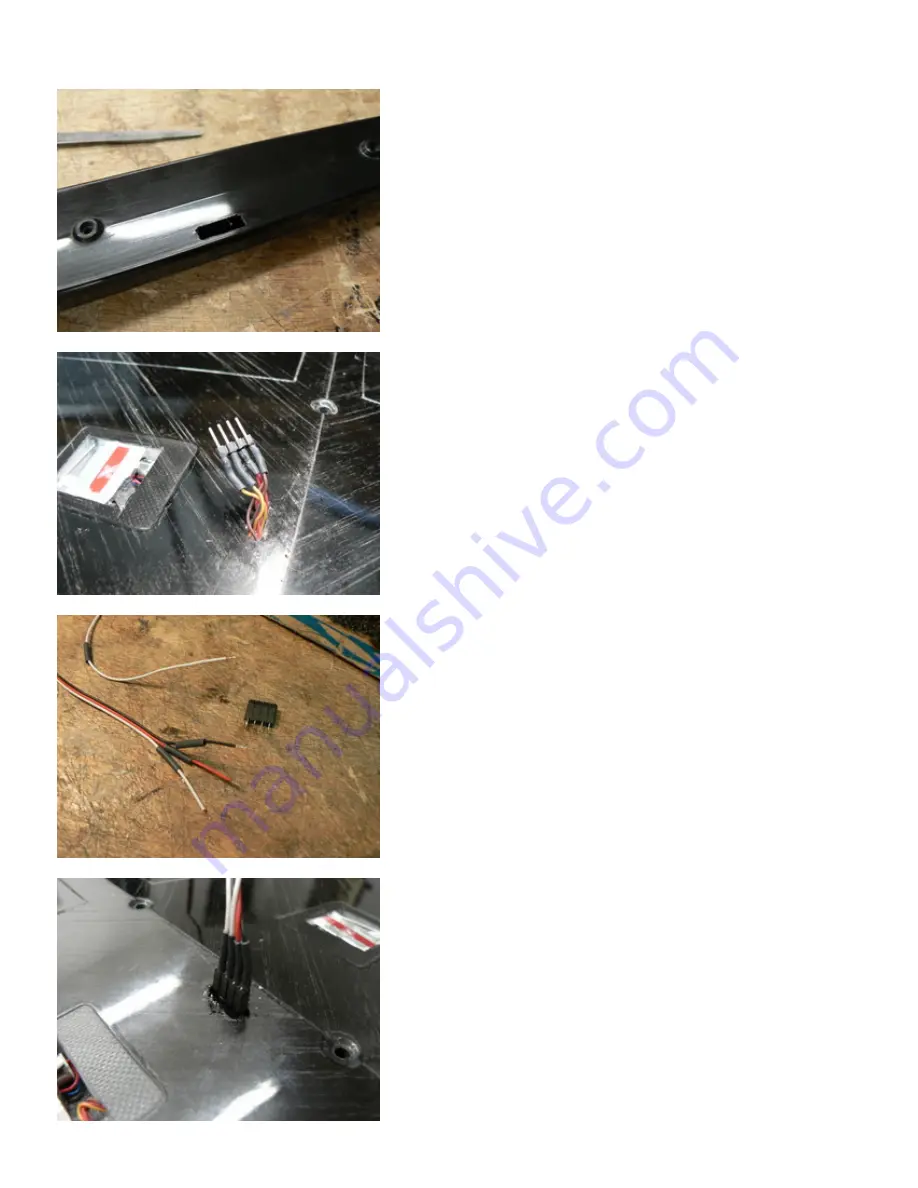
Make a rectangular hole in the fuselage. Allow for some freedom of
movement around the connector. The two connector parts must mate
exactly and the fuselage part will be exactly positioned by the wing
in a later step.
Solder the male connector part to the servo wires (after the servo
installation is done).
Prepare the wire harness that will go inside the fuselage.
Glue the wing part of the connector inside the wing, either flush or
slightly below the wing surface. Use the mating part of the connector
for keeping the pins vertically. After the epoxy cures, clean the
excess epoxy around the base of the connector.






































